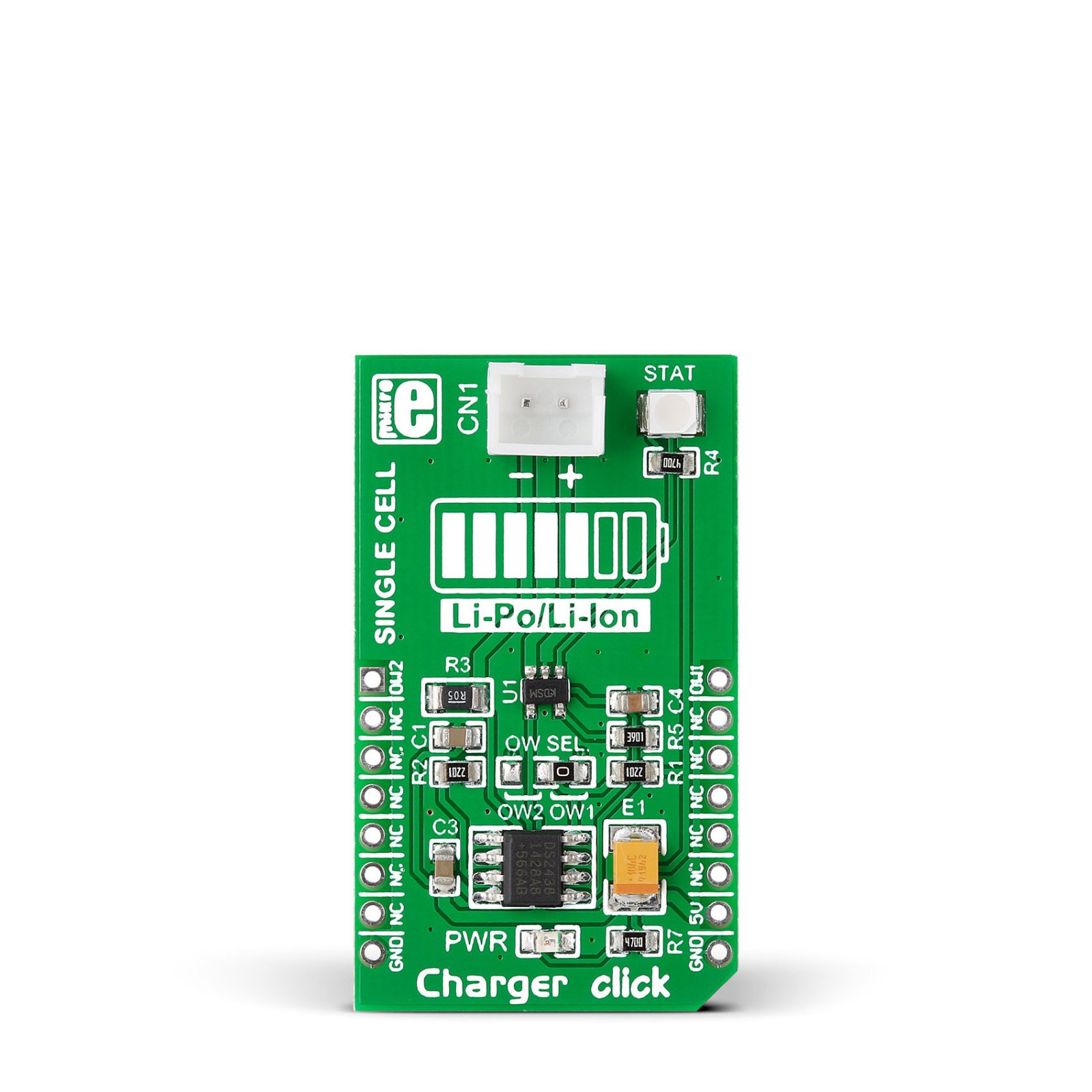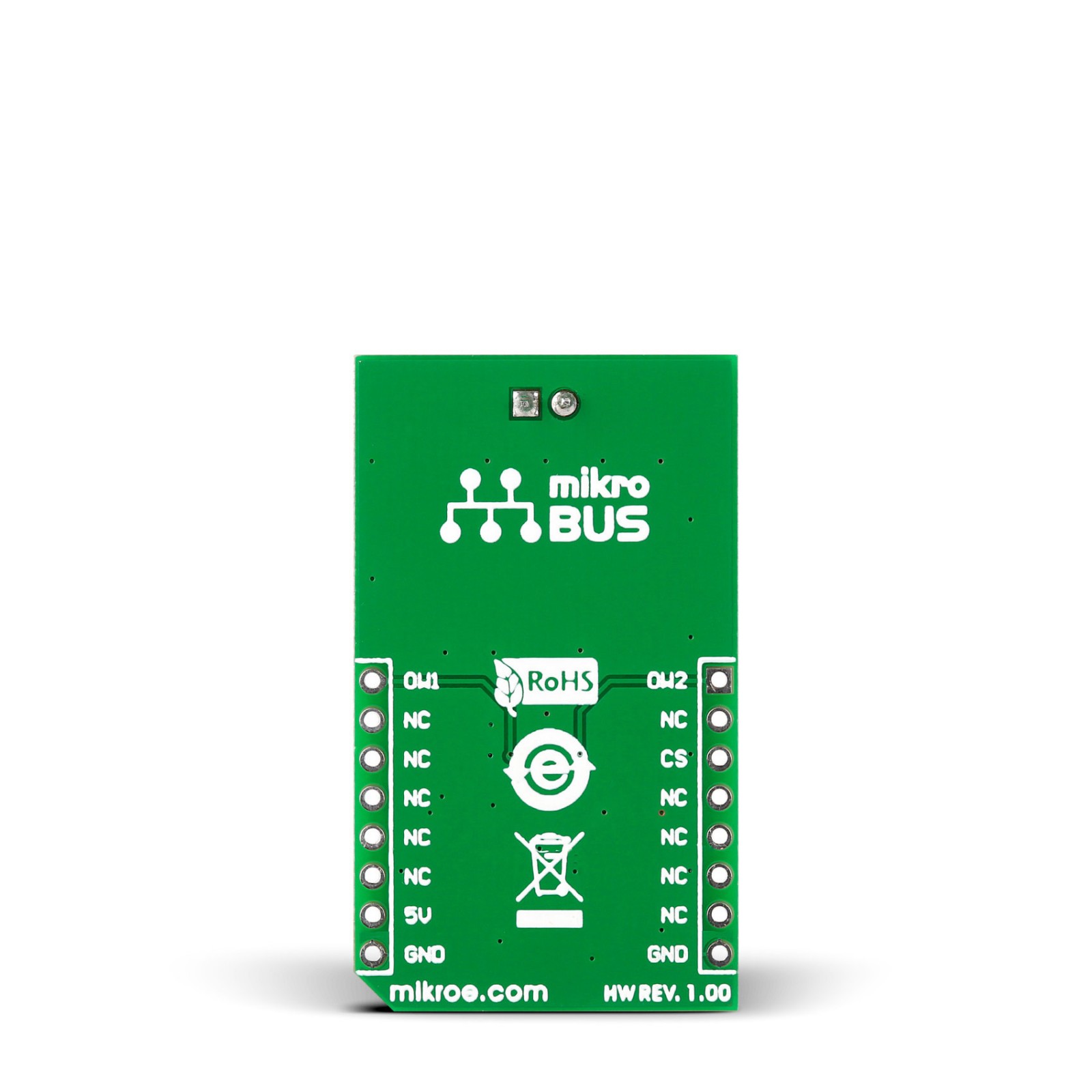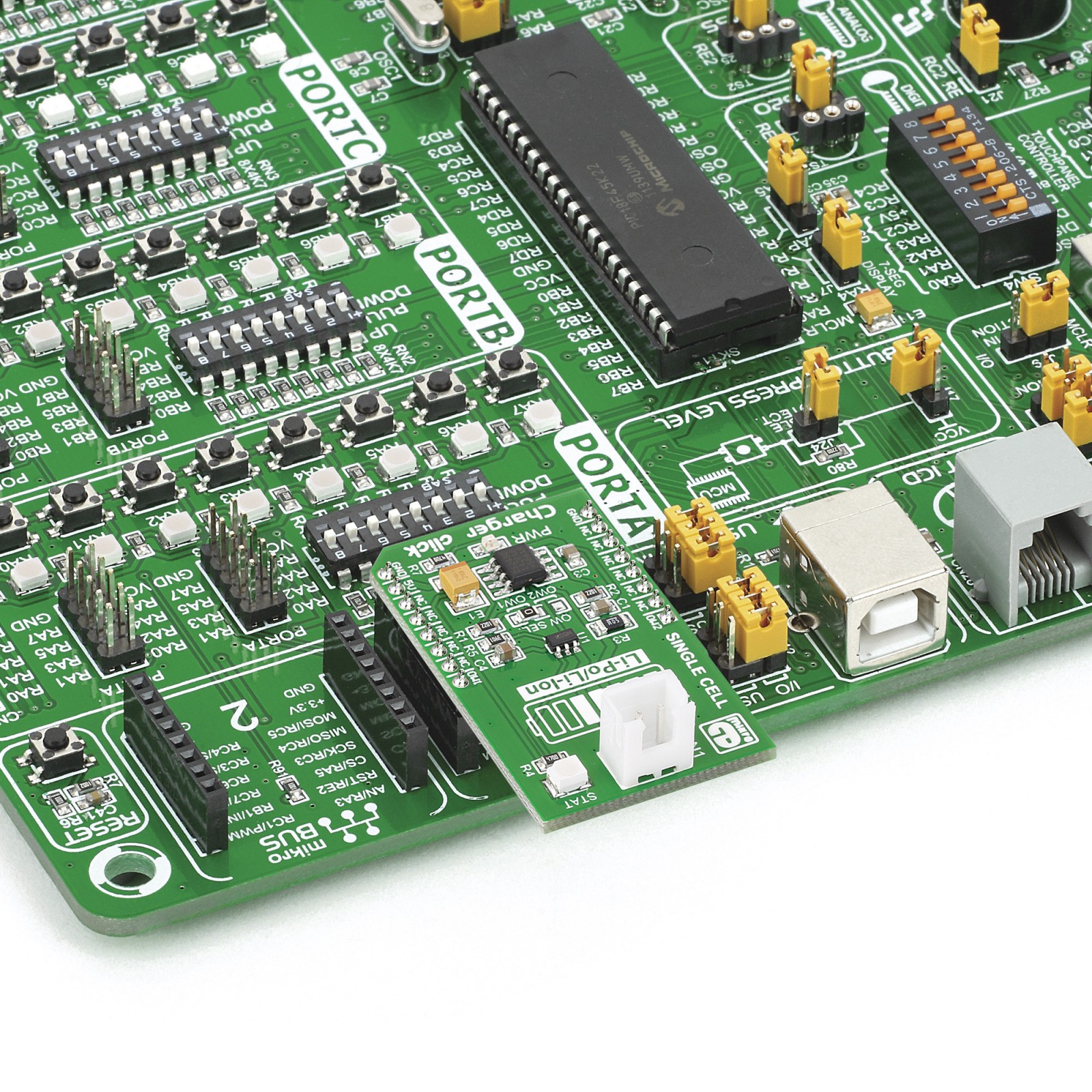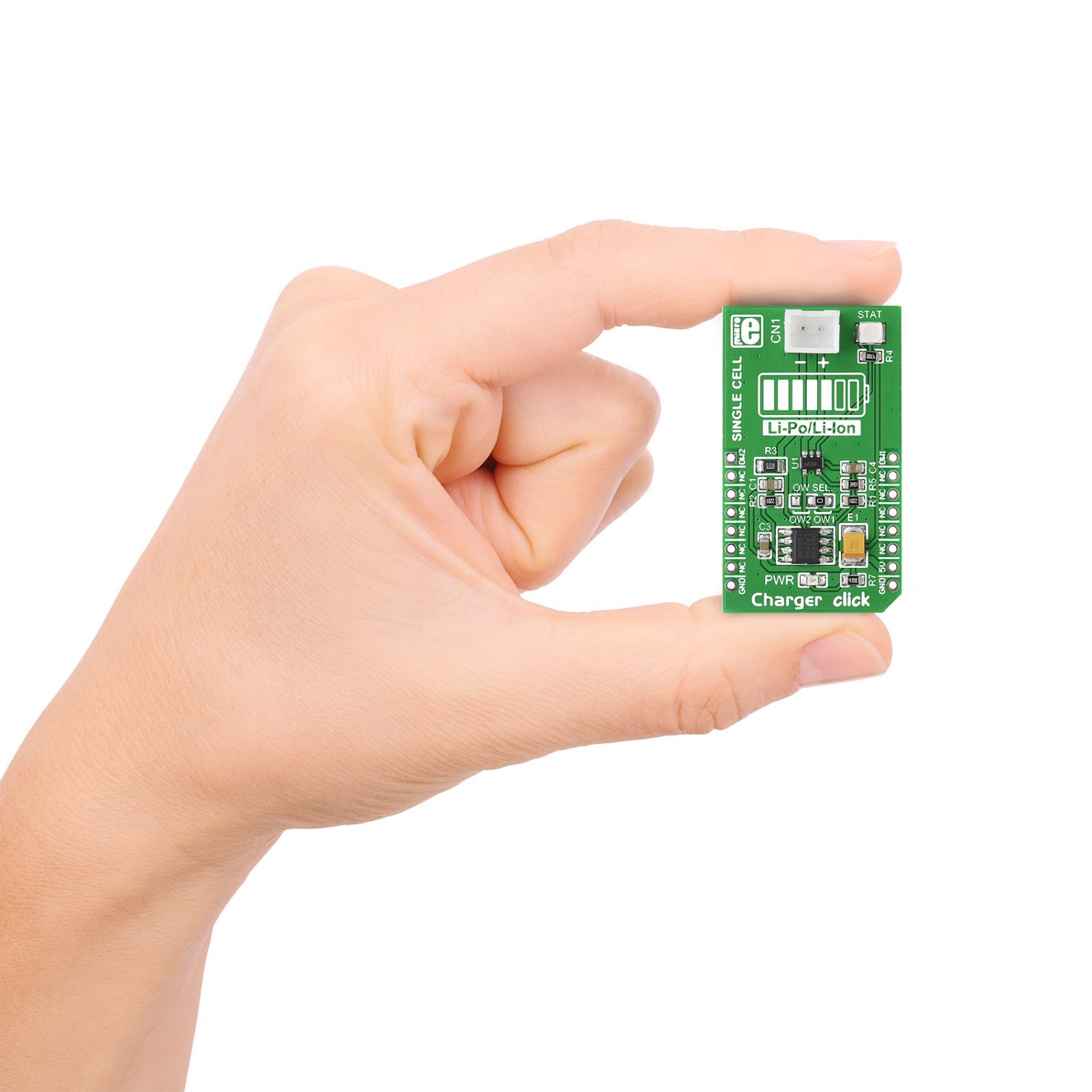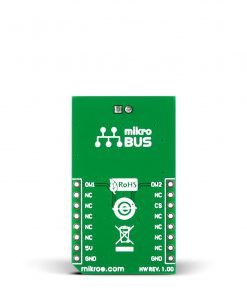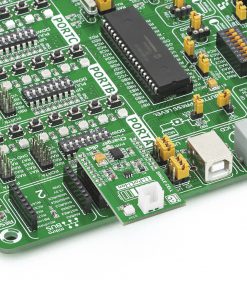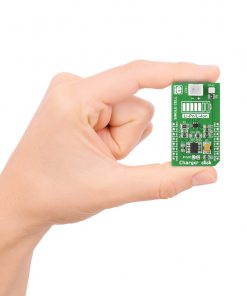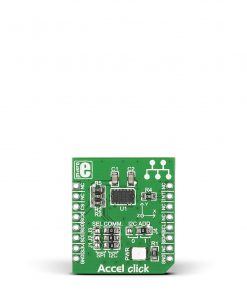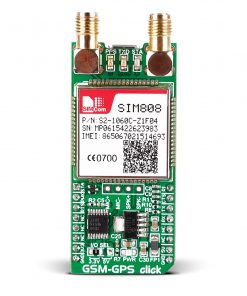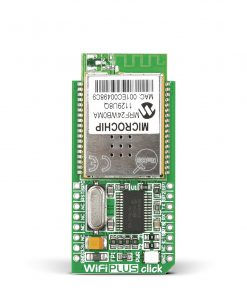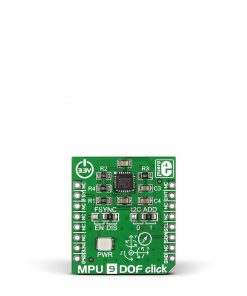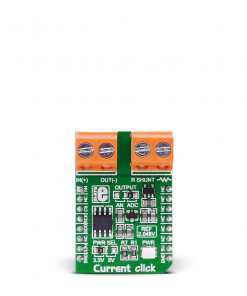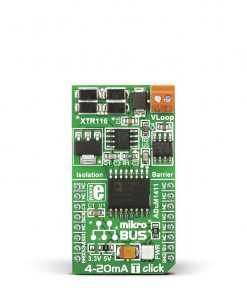Charger Click is a compact add-on board providing a standalone battery charger and monitor. This board features Microchip’s MCP73831, a miniature single-cell, fully integrated Li-Ion, Li-Polymer charge management controller. The charge voltage of the MCP73831 is set to 4.20V, and a charge current to 250mA with an external resistor. In addition, this Click board™ features the DS2438, a smart battery monitor that monitors the total amount of current going into and out of the battery. This Click board™ makes the perfect solution for battery charging interface with precise monitoring for Ly-Ion and Ly-Polymer batteries, applicable for all sorts of devices, with precise monitoring.
Charger Click is supported by a mikroSDK compliant library, which includes functions that simplify software development. This Click board™ comes as a fully tested product, ready to be used on a system equipped with the mikroBUS™ socket.
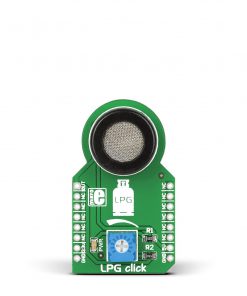 LPG Click
1 × R330.00
LPG Click
1 × R330.00 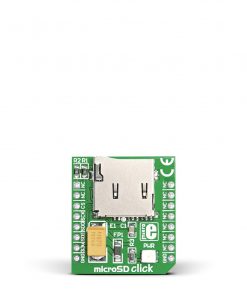 microSD Click
1 × R350.00
microSD Click
1 × R350.00 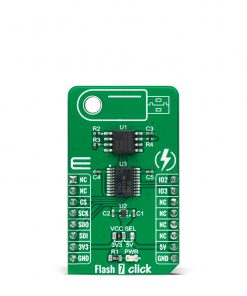 Flash 7 Click
1 × R205.00
Flash 7 Click
1 × R205.00 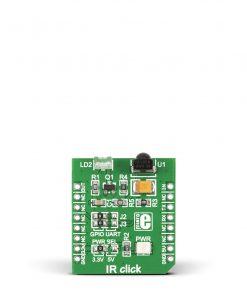 IR Click
1 × R125.00
IR Click
1 × R125.00 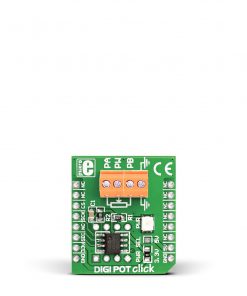 DIGI POT Click
1 × R370.00
DIGI POT Click
1 × R370.00 
